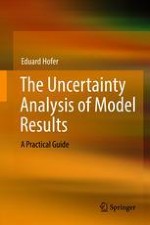2018 | OriginalPaper | Buchkapitel
3. STEP 2: Quantify
verfasst von : Eduard Hofer
Erschienen in: The Uncertainty Analysis of Model Results
Aktivieren Sie unsere intelligente Suche, um passende Fachinhalte oder Patente zu finden.
Wählen Sie Textabschnitte aus um mit Künstlicher Intelligenz passenden Patente zu finden. powered by
Markieren Sie Textabschnitte, um KI-gestützt weitere passende Inhalte zu finden. powered by
